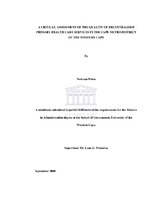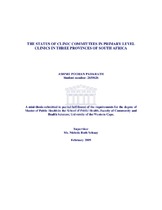| dc.contributor.advisor | Mathews, Verona | |
| dc.contributor.author | Govender, Mandy | |
| dc.date.accessioned | 2023-05-15T10:46:45Z | |
| dc.date.available | 2023-05-15T10:46:45Z | |
| dc.date.issued | 2022 | |
| dc.identifier.uri | http://hdl.handle.net/11394/9965 | |
| dc.description | Master of Public Health - MPH | en_US |
| dc.description.abstract | More than three hundred and forty-five million (345 000 000) people live in the South African
Development Community region (SADC), which is also the epicentre of the Human
Immunodeficiency Virus (HIV) pandemic. In the region, Tuberculosis (TB) remains the leading cause
of death among people living with HIV, accounting for around one in three (1/3) Acquired Immune
Deficiency Syndrome (AIDS) related deaths, with seven (7) of the sixteen (16) SADC nations among
the top thirty (30) TB high burden countries globally. Bringing these diseases under control will
contribute to SADC attaining Universal Health Care by 2030 and the health-related Sustainable
Development Goals. | en_US |
| dc.language.iso | en | en_US |
| dc.publisher | University of the Western Cape | en_US |
| dc.subject | Public health | en_US |
| dc.subject | Sustainable Development Goals | en_US |
| dc.subject | Community health workers | en_US |
| dc.subject | HIV | en_US |
| dc.subject | Tuberculosis | en_US |
| dc.subject | World Health Organization (WHO) | en_US |
| dc.title | Digital health applications used by community health workers for the management of HIV/AIDS and TB in the southern African development community region: A scoping review on the factors that influence the success and failure of such applications | en_US |
| dc.rights.holder | University of the Western Cape | en_US |




